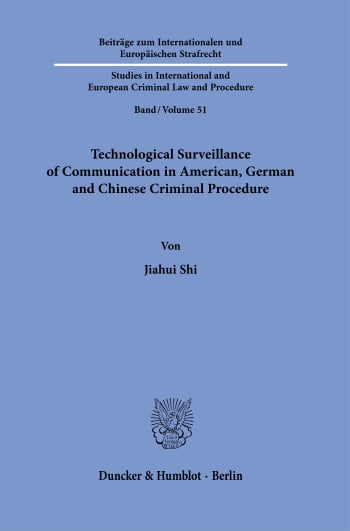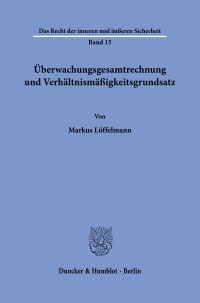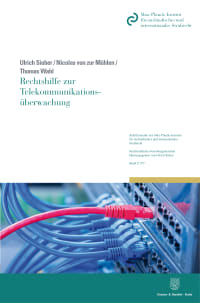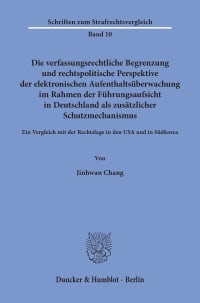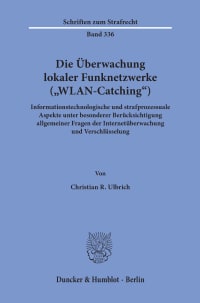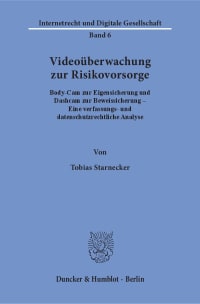Beschreibung
Due to the rise of organized crime and the rapid development of surveillance technologies, such technologies are increasingly used for the purpose of criminal investigation. However, the proliferation of such highly intrusive measures can jeopardize the individual right to privacy and the constitutionally protected secrecy of private telecommunication. It is therefore necessary to devise a legal framework that balances the need for efficient law enforcement with individuals’ privacy rights. In this study, the author discusses the laws on covert surveillance as an investigative measure in the criminal process of the United States, Germany, and the P.R. China from theoretical and empirical perspectives. The author then provides a horizontal comparison of the three legal systems, with the aim of identifying solutions that achieve a proper balance between the protection of the right to privacy and the effective combat of crime.
Inhaltsübersicht
Introduction: The Background of the Study – The Three Jurisdictions – Presentation of Problems – Structure of the Study
1. Surveillance of Wire and Oral Communications in the U.S.: Constitutional Protection – Surveillance of Wire Communications and Oral Communications in Federal Statutes – Exceptions from the General Prohibition of Warrantless Surveillance – Procedure – Exclusionary Rule – Empirical Studies
2. Technological Surveillance in the Federal Republic of Germany: Telecommunication – Acoustic Surveillance (akustische Überwachung) – Procedure – »Prohibitions of Evidence« (»Beweisverbote«) – Empirical Reports
3. Technological Investigative Measures in the People’s Republic of China: Telecommunication and Art. 40 of the Chinese Constitution – The Inviolability of the Residence and Art. 39 of the Chinese Constitution – Technological Measures in Legislation and Departmental Regulations – Procedural Requirements – Admissibility of Information from TIMs
4. Conclusions with Horizontal Comparison: »Reasonable Expectation of Privacy« vs. »Core Area of Privacy» – Statutory Protections – Procedure – The Exclusionary Rule – Empirical Studies – Final Comments and Suggestions for Reforms in China
Appendix
Reports on the questionnaires
References, Index
Weitere Bücher zum Thema
Kontakt
-
+49 30 / 79 00 06 - 0
-
Bestellinformation
-
Versandkostenfrei innerhalb Deutschlands.
-
Für Kunden aus EU-Ländern verstehen sich unsere Preise inklusive der gesetzlichen Mehrwertsteuer und – außer bei digitalen Publikationen – zuzüglich Versandkosten. Für Kunden aus Nicht-EU-Ländern verstehen sich unsere Preise als mehrwertsteuerfrei und – außer bei digitalen Publikationen – zuzüglich Versandkosten.
-
-
Newsletter
